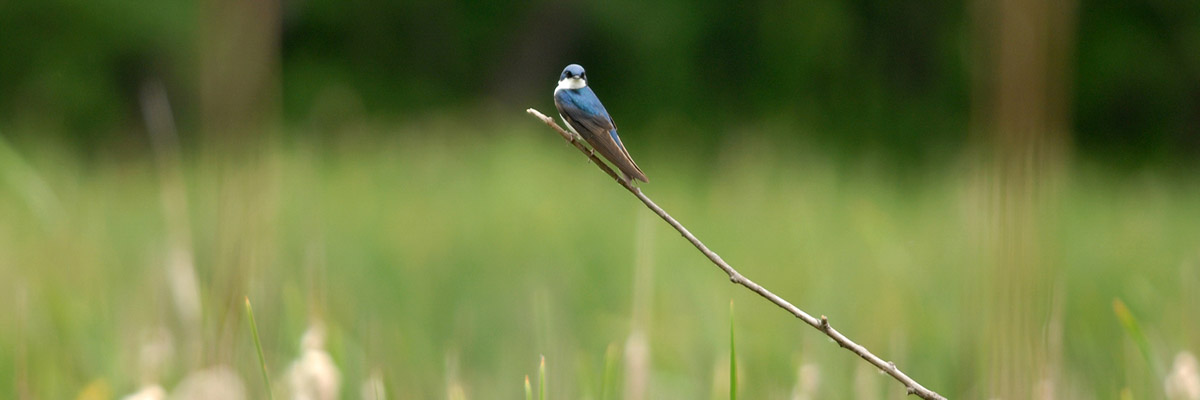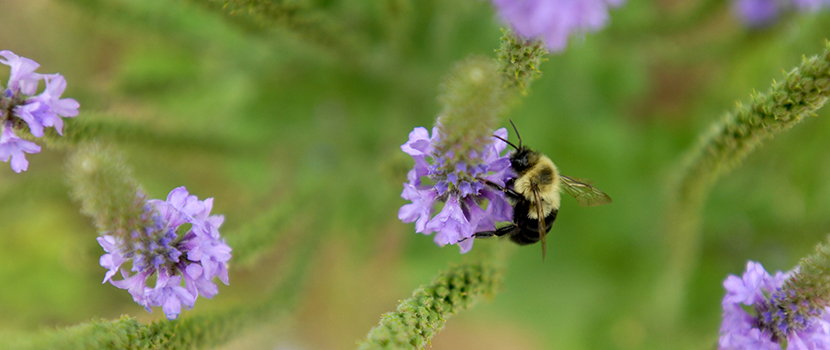
Surveys
Three Rivers conducts wildlife surveys to monitor and promote animal and plant populations.
Carnivore Scent Stations
Monitoring the abundance of carnivores is difficult because they are highly secretive and they occur at low densities. The MN DNR has been conducting carnivore scent stations throughout the state since the 1975. Three Rivers Park District began survey routes at each of the park reserves in 2014.
A route consists of 10 stations spaced 0.5 KM apart. Each scent station is a 0.9 M diameter circle of sifted soil with a fatty-acid scent tablet placed in the middle. The route is left over night and visited the next day to read the tracks and identify any animals that visited the station overnight.
Because this survey is so new inside Three Rivers, staff have collected only a few years of data. Over time, staff hope to use this data to gain valuable information about carnivores in the parks. The carnivores that have been identified visiting a Three Rivers station include raccoons, skunks, gray fox, red fox and coyotes. Surveys have found very few fox and skunks, and more coyotes and raccoons. This survey also provides the MN DNR with valuable information because there are no other routes in Hennepin, Scott and Carver Counties.
Pollinator Surveys
For their small size, pollinators have powerful impacts on our landscapes and ecosystems. In addition to supporting native plant communities, pollinators are responsible for the success of many food crops such as apples, blueberries, cranberries and more. By pollinating plants, they also create shelter and food for wildlife.

There are approximately 400 native bee species in Minnesota. The exact number is unknown because the most recent state species list was published in 1919. With concerns for the current health of our wild bee populations and knowing very little about their diversity and distribution, research on wild bees is critical. Wildlife staff are currently assisting with generating baseline data about wild bee populations through the following surveys:
- Pan Trapping through coordination of field staff with the Minnesota Biological Survey
- The Minnesota Bee Atlas Bee Blocks project
- Minnesota Bumble Bee Survey
While Minnesota has at least 20 bumblebee species, survey results have confirmed 14 different species between Elm Creek and Crow-Hassan Park Reserves.
You can support pollinators by planting and providing blooming plants during spring, summer and fall. It is recommended to plant native and local species whenever possible because they often have more pollen and nectar than cultivars. You can also provide nesting spots for cavity-nesting bees. These species are usually unlikely to sting but people who are allergic should take the same precautions.
Songbird Surveys
Three Rivers Park District conducts annual surveys of songbirds in the parks. These surveys show that generalist species like House Wrens, Northern Cardinals, American Goldfinches, Blue Jays, Song Sparrows and Common Yellowthroats are becoming more common, while grassland species like Bobolinks, Grasshopper Sparrows and meadowlarks are declining. Woodland species like Wood Thrush, Scarlet Tanager and Ovenbird are showing little change in population. The parks are going through a period of rapid succession to forests, but the forests have not matured sufficiently yet to be suitable for woodland species of wildlife.
Murphy-Hanrehan Park Reserve remains the best park to see woodland bird species in Three Rivers. The surveys also show that Crow-Hassan and Carver Park Reserves are the best locations for open-site species. Purple Martin colonies have been established at Baker National Golf Course, Eagle Lake Golf Course and at the swimming beach at French Regional Park.
Three Rivers provides programs and opportunities to get involved with the annual bird surveys. Download the Checklist and Observation Guide for birding in the parks to learn more. Please report unusual bird sightings to Park District staff by calling the Natural Resources division at 763-694-7840 or one of the Nature Centers.
- Eastman Nature Center, Elm Creek Park Reserve: 763-694-7700
- Lowry Nature Center, Carver Park Reserve: 763-694-7650
- Richardson Nature Center, Hyland Lake Park Reserve: 763-694-7676
Turtle Study
In the spring of 2016, the University of St. Thomas and Three Rivers Park District launched a three year project studying turtle population dynamics in an urban lake. The project hoped to figure out how turtles in Medicine Lake use the lake for nesting, feeding, hibernating and day to day activities. The study also looked at the lake’s water quality and how it effects the turtle use.

The study was initiated because Three Rivers Park District wildlife staff have been monitoring spiny softshell turtles nesting at French Regional Park for a number of years. There were a lot of questions on habitat use, additional nesting sites, population size, water quality and more.
Wildlife staff and the University of St. Thomas Biology Department received funding for this project by the Minnesota Environment and Natural Resources Trust Fund. A special research permit was received from the MN Department of Natural Resources to allow the trapping of turtles.
The study is now complete. See what we learned about the turtles in Medicine Lake.
Vegetation Surveys
Three different sampling methodologies have been used by the Wildlife Section to gather vegetation data within the Park District. The protocols are known as Woodlot, Forb Study and Prairie/Old Field.
The most commonly used practice has been the Woodlot sampling protocol. It has been used to collect baseline data in all of the park reserves and in several regional parks. It has also been used, with slight modifications, for sampling the blowdown areas at Murphy-Hanrehan Park Reserve. All of the vegetation points have been marked with GPS coordinates and the locations and survey data are maintained by Natural Resources staff.
Recently another form of vegetation survey has been developed to look at the management units from a more qualitative approach. This report card helps staff better prioritize the areas for needed burning, spraying and cutting.
